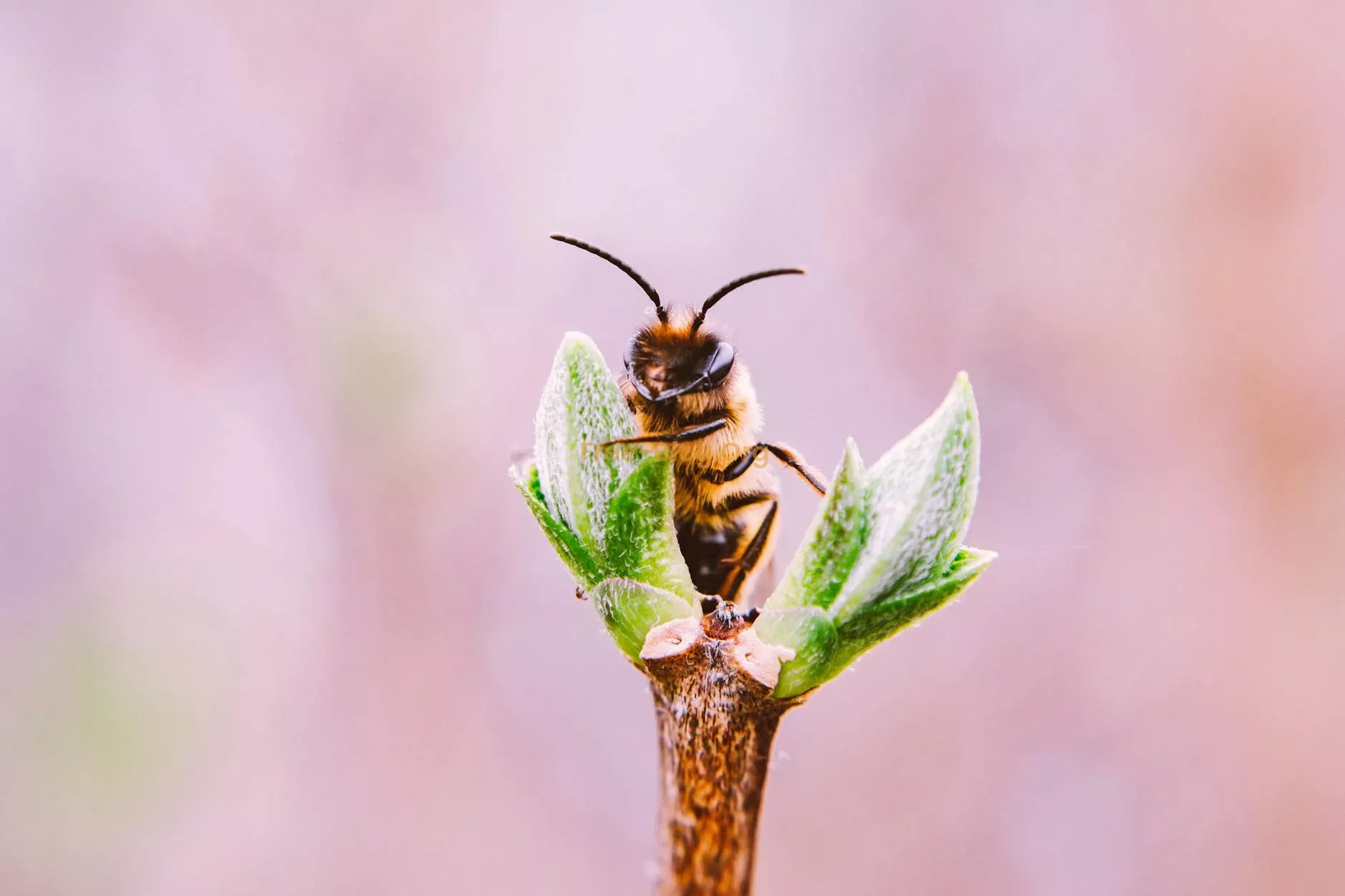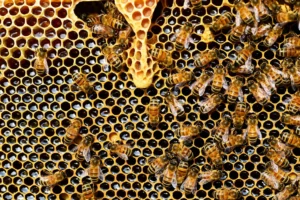Buckfast honey bee

The Buckfast Honey Bee: A Comprehensive Guide
The Buckfast Honey Bee, also known as the Buckfast bee, is a fascinating and unique species that has a rich history and several distinctive characteristics. Here are 10 fascinating facts about the Buckfast Honey Bee, along with its origins and history.
- The Buckfast Honey Bee: A Comprehensive Guide
- 10 Fascinating Facts About the Buckfast Honey Bee
- The Origins and History of the Buckfast Honey Bee
- Table: Comparison of Buckfast Honey Bees with Other Bee Species
- Exploring the Unique Characteristics of Buckfast Honey Bees
- The Role of Buckfast Honey Bees in Agriculture
- How to Identify Buckfast Honey Bees
- The Benefits of Keeping Buckfast Honey Bees as Valuable Pollinators
- Enhanced Pollination:
- Gentle Temperament:
- Resistance to Diseases:
- High Productivity:
- Buckfast Honey Bees: A Valuable Pollinator
10 Fascinating Facts About the Buckfast Honey Bee
1. **Hybrid Origin**: The Buckfast Honey Bee is a hybrid species created by Brother Adam at Buckfast Abbey in Devon, England, in the early 20th century.
2. **Gentle Nature**: Buckfast bees are known for their gentle temperament, making them a popular choice among beekeepers.
3. **Productivity**: They are highly productive bees, known for their efficiency in honey production and pollination.
4. **Disease Resistance**: Buckfast bees exhibit a strong resistance to diseases such as foulbrood, making them a hardy species.
5. **Adaptability**: These bees are adaptable to various climates and environments, thriving in different conditions.
6. **Color Variation**: Buckfast bees come in various color variations, ranging from light golden to dark brown.
7. **Foraging Skills**: They are excellent foragers, collecting nectar and pollen from a wide variety of plants.
8. **Queen Rearing**: Buckfast bees are known for their ability to rear queens effectively, contributing to the sustainability of their colonies.
9. **Genetic Diversity**: The breeding practices of Buckfast bees focus on maintaining genetic diversity to ensure healthy populations.
10. **Global Presence**: Buckfast bees are now found in beekeeping operations worldwide, testament to their popularity and success.
The Origins and History of the Buckfast Honey Bee
The Buckfast Honey Bee was created by Brother Adam, a monk at Buckfast Abbey, who aimed to develop a bee with superior qualities. He crossed various bee subspecies, including the Italian, Carniolan, and British black bees, to create a resilient and productive hybrid.
Brother Adam’s breeding program focused on selecting bees with desirable traits such as gentleness, productivity, disease resistance, and adaptability. Over the years, the Buckfast bee gained recognition for its exceptional characteristics, leading to its widespread adoption by beekeepers around the world.
Today, the Buckfast Honey Bee continues to thrive, thanks to its rich genetic diversity and the ongoing efforts of beekeepers to preserve and propagate this unique species.
Table: Comparison of Buckfast Honey Bees with Other Bee Species
| Characteristic | Buckfast Honey Bee | Other Bee Species |
|---|---|---|
| Temperament | Gentle | Varies |
| Productivity | High | Varies |
| Disease Resistance | Strong | Varies |
| Adaptability | Wide Range | Varies |
| Color Variation | Various | Varies |
Overall, the Buckfast Honey Bee stands out as a remarkable species that combines the best traits of various bee subspecies, making it a valuable asset to beekeeping communities globally.
Exploring the Unique Characteristics of Buckfast Honey Bees
Buckfast honey bees, known for their exceptional qualities, were developed by Brother Adam at Buckfast Abbey in England. These bees exhibit remarkable traits such as disease resistance, gentleness, high productivity, and adaptability to various climates. Their ability to forage in cool and wet weather sets them apart from other bee breeds.
The Role of Buckfast Honey Bees in Agriculture
Buckfast honey bees play a crucial role in agriculture due to their excellent pollination abilities. As proficient pollinators, they significantly contribute to the growth and yield of crops such as fruits, vegetables, and flowers. Their gentle nature makes them ideal for beekeeping, allowing beekeepers to work with them efficiently.
How to Identify Buckfast Honey Bees
Identifying Buckfast honey bees can be done by observing certain characteristics. They are typically a mix of grey, black, and brown colors, with bands on their abdomen varying in color intensity. Their behavior is calm and less likely to sting, making them stand out from more aggressive bee species. Additionally, Buckfast honey bees are known for their rapid colony growth and resistance to diseases like varroa mites.
| Characteristic | Description |
|---|---|
| Coloration | Mix of grey, black, and brown with varying abdomen band colors |
| Behavior | Calmer nature, less likely to sting |
| Colony Growth | Rapid growth rate |
| Disease Resistance | Resistant to varroa mites and other common bee diseases |
In conclusion, Buckfast honey bees are a valuable asset to agriculture with their unique characteristics and vital role in pollination. Identifying them is essential for beekeepers looking to benefit from their exceptional qualities.
The Benefits of Keeping Buckfast Honey Bees as Valuable Pollinators
Buckfast honey bees are a popular choice among beekeepers for their numerous benefits, especially as valuable pollinators. These bees are a hybrid species resulting from the crossbreeding of various honey bee subspecies, developed by Brother Adam at Buckfast Abbey in England. Here are some reasons why keeping Buckfast honey bees can be advantageous:
Enhanced Pollination:
One of the key benefits of Buckfast honey bees is their exceptional pollination capabilities. These bees are known for their efficient foraging behavior and large foraging range, which allows them to visit a wide variety of plants for nectar and pollen. As a result, they contribute significantly to the pollination of crops, fruits, and wildflowers, leading to better yields and healthier ecosystems.
Gentle Temperament:
Buckfast honey bees are favored for their gentle and docile nature, making them easier to manage for beekeepers, especially beginners. Their calm temperament reduces the risk of aggressive behavior, stings, and swarming, creating a more pleasant beekeeping experience.
Resistance to Diseases:
Another advantage of Buckfast honey bees is their increased resistance to common bee diseases and parasites, such as Varroa mites and foulbrood. This resistance is a result of the breeding efforts that focused on developing bees with strong immune systems, making them more resilient to health challenges affecting bee populations worldwide.
High Productivity:
Buckfast honey bees are known for their high productivity in terms of honey production. These bees are diligent workers, efficiently collecting nectar and producing quality honey. Beekeepers benefit from the abundance of honey harvested from Buckfast hives, making them a valuable asset in apiculture.
Buckfast Honey Bees: A Valuable Pollinator
As a valuable pollinator, Buckfast honey bees play a vital role in sustaining biodiversity and supporting agricultural practices. Their efficient pollination services benefit both natural ecosystems and human food production. By actively foraging on a diverse range of plants, Buckfast honey bees ensure the transfer of pollen, enabling the fertilization of flowers and the production of fruits and seeds.
In addition to their pollination benefits, Buckfast honey bees contribute to the overall health of the environment by supporting the growth of plant populations and promoting genetic diversity. Their role in pollination directly impacts food security and ecosystem stability, making them indispensable contributors to the balance of nature.
| Advantages of Buckfast Honey Bees | Description |
|---|---|
| Enhanced Pollination | Efficient foraging behavior and wide foraging range contribute to better crop yields. |
| Gentle Temperament | Docile nature reduces the risk of stings and swarming, making them easier to manage. |
| Resistance to Diseases | Increased immunity to common bee diseases ensures hive health and longevity. |
| High Productivity | Diligent workers that produce quality honey in abundance for beekeepers. |
Overall, the benefits of keeping Buckfast honey bees extend beyond honey production, making them a valuable asset for beekeepers, farmers, and the environment alike. Their unique characteristics and contributions as pollinators highlight the importance of conserving and promoting these hybrid bees for a sustainable future.
A Buckfast honey bee is a hybrid honey bee breed known for its gentle behavior, productivity, and resistance to diseases. It was developed by Brother Adam at Buckfast Abbey in England in the early 20th century.
Buckfast honey bees are known for their calm temperament, strong work ethic, high honey production, and resistance to common diseases such as varroa mites and foulbrood. They are popular among beekeepers for their ease of management.
Buckfast honey bees are a hybrid breed created by crossing various honey bee subspecies to produce desirable traits such as disease resistance, productivity, and docile behavior. This sets them apart from purebred honey bee subspecies like Italian or Carniolan bees.
Buckfast honey bees can be purchased from reputable bee breeders, apiaries, or beekeeping supply stores. It’s important to ensure that the bees come from a reliable source to maintain the desired characteristics of the Buckfast breed.
To care for Buckfast honey bees, provide them with a suitable hive environment, regular inspections for disease prevention, access to forage areas, and proper nutrition. It’s also essential to manage the hive population and ensure the queen is healthy and productive.



